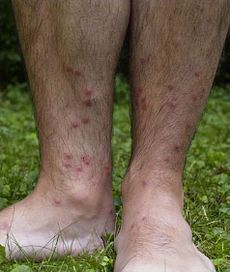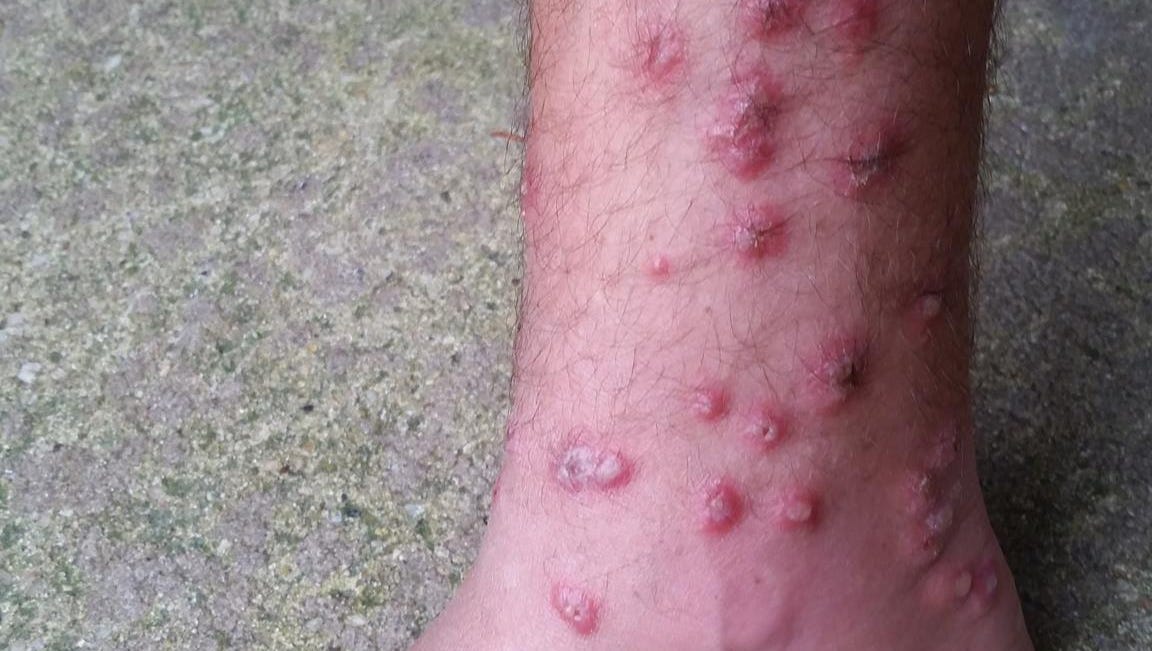

#Swimmers itch on face pictures skin
Avoid excessive scratching of the itchy areas because this can lead to a skin infection. More severe cases may require treatment with prescription medications.

Topical steroids such as hydrocortisone cream and antihistamines such as diphenhydramine (Benadryl®) can be used to treat itching. Baking soda baths and pastes can be helpful as well. Cool compresses and soaking in Epsom salts or oatmeal baths can soothe the rash. Drying your skin with a towel, instead of air drying, may help remove the larvae from the skin. If you suspect swimmer’s itch, you should take a shower if you have not already done so after getting out of the water. Most cases of swimmer’s itch can be easily treated at home. Severe symptoms, including fevers, diarrhea, and nausea, are rarely reported to occur in patients with swimmer’s itch. Because it is an allergic reaction, swimmer’s itch is not contagious. While the rash is uncomfortable, it is generally self-limited and not dangerous.

This helps to differentiate swimmer’s itch from seabather’s eruption, which primarily affects the skin under the swimsuit. The rash typically involves areas of the body that are exposed to the water, with areas of skin covered by bathing suits being spared. The rash may appear similar to pimples, chickenpox, or blisters, and is often red and itchy or burning in nature. Within a few minutes to a couple of days after swimming in contaminated water, a rash can develop. The larvae die, but their presence in human skin can cause the characteristic itchy rash. The larvae are able to painlessly burrow into human skin, but the parasites are not able to survive there. The larvae can be encountered by swimmers, particularly in shallow and marshy areas, although the tiny larvae are too small to see. If the parasite eggs are released into or near the water, they can hatch into larvae, which can then infect snails. The adult parasites produce eggs, which are passed into the water from the feces of these animals. Several species of birds (geese, ducks, gulls) and mammals (beavers) that live near water can be infected with parasites in their blood. Swimmer’s itch is a water-borne parasitic disease, and the normal life cycle of the disease-causing parasite involves different animals. This is called swimmer’s itch or cercarial dermatitis. When swimmers come into contact with these parasite larvae, the larvae can burrow under the skin, causing an allergic reaction that manifests as itching and rash. Infected snails can then release the larvae back into the water.
#Swimmers itch on face pictures Patch
The patch may look red, pink, silver, or darker than surrounding skin.Snails found in freshwater, and rarely in salt water, can be infected by juvenile parasites (cercarial larvae) that are present in the water. Raised, itchy patches or spots could be caused by an allergic reaction (hives). Heat rash can usually be treated at home. Mediscan / Alamy Stock Photo *%26restriction%3D%26random%3D%26ispremium%3D1%26flip%3D0%26contributorqt%3D%26plgalleryno%3D%26plpublic%3D0%26viewaspublic%3D0%26isplcurate%3D0%26imageurl%3D%26saveQry%3D%26editorial%3D1%26t%3D0%26edoptin%3DĪ rash of small, raised spots that feels itchy or prickly could be heat rash (prickly heat).


 0 kommentar(er)
0 kommentar(er)
